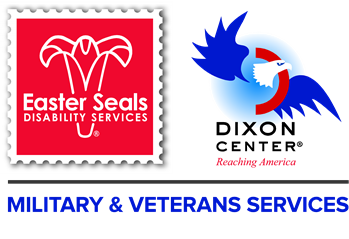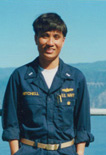Veteran services must account for changing demographics
Today Easter Seals released a white paper about female veteran reintegration calling for federal and state policymakers to invest in community-based solutions to improve the transition to civilian life for female veterans.
I would never presume to fully understand the unique challenges that female veterans experience – and I do not want to put words in the mouths of my fellow veterans. But I can tell you that this is an important issue.
Studies and reports have extensively documented the challenges that female veterans face. There are more than 2 million female veterans in the U.S., and it is estimated that almost 200,000 women currently in the military will transition into civilian life over the next several years.
My business partner Kim Mitchell, a former Lieutenant Commander in the U.S. Navy for 17 years, states unequivocally that in a male-dominated field such as the U.S. military, women do everything they can not to be perceived as weak. She understands, more so than me, that women will often remain silent in group counseling sessions that mix male and female veterans. Yet I see these mixed-gender sessions taking place throughout the country. It’s not malicious on the part of the organizers; it’s simply that many civilians do not grasp this nuance of military culture.
 Veteran reintegration works best when it is local, tailored individually and holistically to meet the unique needs of each veteran. Put another way, what works for a man doesn’t always work for a woman – and vice versa. Easter Seals examines best practices for female veterans in its Call to Action white paper and describes the models it successfully uses in its veteran programs across the country.
Veteran reintegration works best when it is local, tailored individually and holistically to meet the unique needs of each veteran. Put another way, what works for a man doesn’t always work for a woman – and vice versa. Easter Seals examines best practices for female veterans in its Call to Action white paper and describes the models it successfully uses in its veteran programs across the country.
Today Kim and I are speaking at the National Council of State Legislatures (NCSL) summit in Seattle as part of a new partnership between Easter Seals and NCSL. We are urging state leaders to help promote veteran reintegration by reducing the fragmentation that exists among available veteran services and by expanding effective care coordination and supportive services models at the local level.
We need more community-driven programs that operate within this proven veteran reintegration model. There is only so much that the government can do. To fill the gaps, state leaders should authorize and fund state care coordination programs for all generations of veterans.
Part of this funding must be earmarked for community asset-mapping and service coordination efforts. This isn’t complex. What this means is that organizations like Easter Seals will make an assessment of all services in a community, connecting the dots between like-minded organizations to promote a synergistic, holistic approach.
Battlefields do not distinguish between men and women. I’ll never forget my brigade S2 (staff non-commissioned officer) in Iraq, Staff Sergeant Tami Reeder. She supervised intelligence analysis and volunteered to lead mortuary affairs. This meant that SSG Reeder was responsible for recovering and processing bodies of those killed in action. I saw her going into burned-out buildings and vehicles, treating her job and her charges with the utmost dignity. She was as courageous as they come.
The civilian world is not the battlefield, though. Many civilians did not understand what SSG Reeder had gone through in Iraq and did not initially acknowledge that she faced the same war trauma as her male counterparts. Thankfully, that awareness is changing, and perhaps this will be a non-issue when she ultimately retires from active duty.
As society recognizes that each veteran is his/her own individual, we are seeing the acknowledgement that sometimes it makes sense to customize solutions for our veterans to improve their transition to civilian life. If it aids in the reintegration process, I’m all for it.







